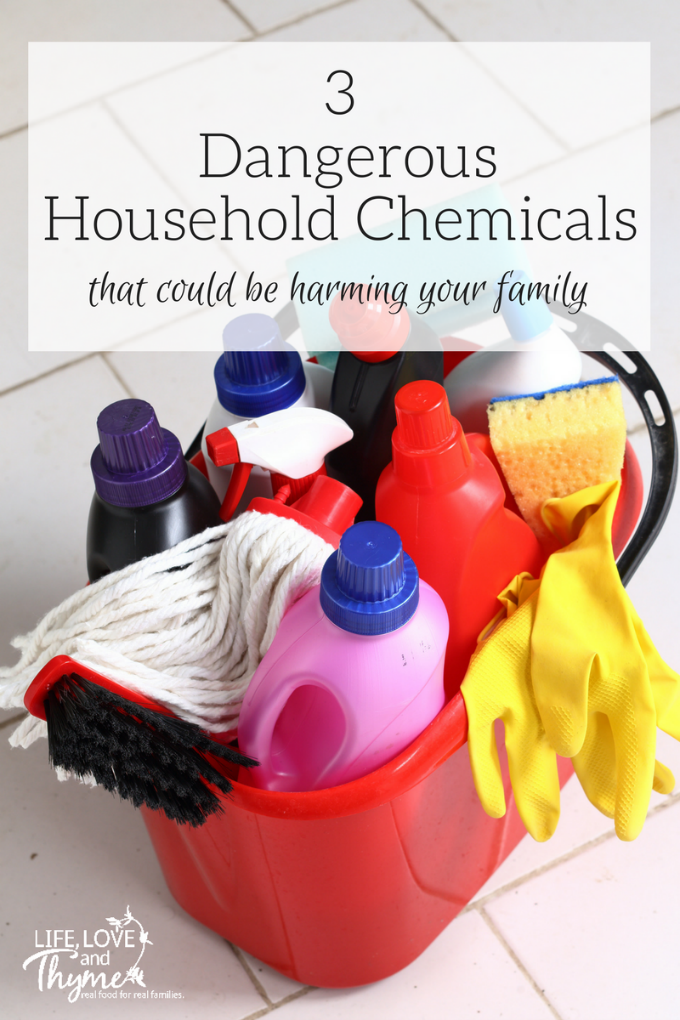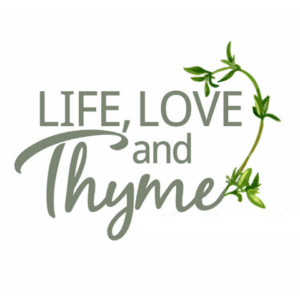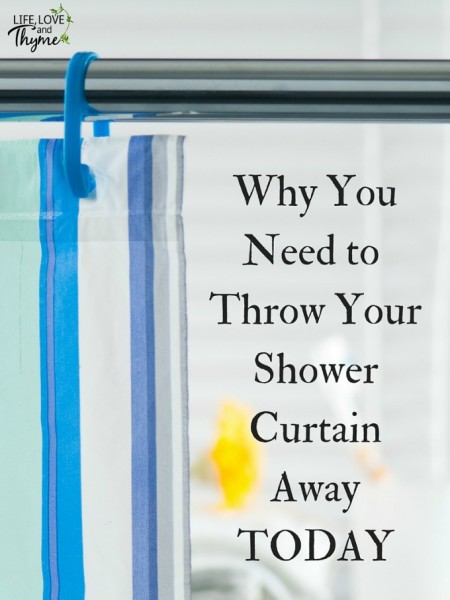Most moms I know are looking to just make it through each day while keeping their children safe, well fed and from spending way too much time on electronics (or fighting over them). We try to buy the right food and household products, but have very little time to actually research all the minute chemicals in each.
We assume the government is checking these chemicals. We assume the companies selling these products have a conscious. We assume that by keeping our house and kids clean, we are keeping them safe. I can tell you, we’ve been assuming wrong. Today let’s cover 3 dangerous household chemicals that could be harming your family (and mine): phthalates, sodium laurel sulphate and formaldehyde.

Dangerous Household Chemicals
Phthlates
According to the CDC, phthalates are chemicals that are used to make plastics more flexible and break less often. They can be found in many, many household products from flooring to soaps and even children’s toys. (Phthalates, 2016). Because phthalates are found in so many common products, our exposure to them is widespread with the most exposure appearing to be to adult women because we tend to use more personal care products.
As of 2017, we do not really know the full extent of damage phthalates are doing to our families’ bodies, but we do know that they are endocrine disruptors. Endocrine disruptors are chemicals that affect hormones in the body. Phthlates have been linked to infertility and genital abnormalities especially in males (Phthalates, n.d.).
So how do we avoid phthalates? It’s difficult because plastics have become such a large part of our everyday lives. There are some simple things you can do: cook your own fresh foods, use glass or stainless steel for storing foods and do not microwave plastics (Tip Sheet: 6 Simple Steps to Avoid BPA and Phthalates in Food, 2014).
Sodium Laurel Sulphate
Sodium Laurel Sulphate (SLS) is a surficant, detergent and emulsifier. SLS is approved for use in soaps, shampoos, cosmetics, make up, toothpaste and laundry detergent, just to name a few. It can lead to skin and eye irritation, organ toxicity, endocrine disruption and possibly even cancer (Sodium Lauryl Sulfate: Facts Versus Fairytales, n.d).
Again, we don’t truly know the full extent of damage from daily exposure to SLS or its cumulative effects on the body. My biggest concern for my kids is that SLS is in toothpaste. SLS containing toothpaste has been shown to irritate the oral cavity (Rantanen et all, 2003).
The mouth is biome all by itself and just as important to maintain the integrity as your gut biome. Irritation can reduce the ability of the oral cavity to begin to digest foods and cause problems in the digestive system. It can also lead to mouth sores and unnecessary pain. I try very hard to look for SLS free toothpastes such as Jason’s.
Formaldehyde
I’m pretty sure that most of us have heard of formaldehyde, but did you know that it is used in many common products for the living too? Formaldehyde is naturally occurring in nature, but the man-made forms are what cause problems. It is used in paints, furniture, wood, air freshener, fabrics, paper towels, baby and skin care products – for a full list go here (Nelson, 2016).
Formaldehyde is a known carcinogenic (causes cancer) and unfortunately there are usually high levels in our homes, schools and work places. It can cause many reactions including respiratory distress, fatigue, depression and more (Formaldehyde, n.d.).
Some easy ways to limit formaldehyde exposure in your home would be to: open the windows for short periods of time daily; keep the temperature low inside; don’t smoke; buy low or no VOC items; wash linens, clothing, towels, curtains, etc before use and switch to microfiber rags instead of paper towels (Formaldehyde in Your Home: What You Need to Know, 2016).
I know that some of these chemicals can be very scary. I’ve learned that for me sometimes information like this causes overwhelm and then I do nothing. I’d like to encourage you to take the information you’ve learned today about the dangerous household chemicals (phthalates, sodium laurel sulphate and formaldehyde) and commit to making one change to limit your families’ exposure to each of these.
It can be as simple as:
- buying glass containers for storing food;
- changing your toothpaste to SLS free;
- opening your windows for 5 minutes each day.
Remember health is a journey not a destination. Your small choices everyday will add up to better health for both you and your family.
How do you reduce your families’ exposure to dangerous household chemicals?

Resources
Phthalates. (2016, December 23). Retrieved January 23, 2017, from https://www.cdc.gov/biomonitoring/phthalates_factsheet.html
Phthalates. (n.d.). Retrieved January 23, 2017, from http://saferchemicals.org/chemicals/phthalates/
Tip Sheet: 6 Simple Steps to Avoid BPA and Phthalates in Food. (2014, April 28). Retrieved January 23, 2017, from http://silentspring.org/resource/tip-sheet-6-simple-steps-avoid-bpa-and-phthalates-food
Sodium Lauryl Sulfate: Facts Versus Fairytales. (n.d.). Retrieved January 23, 2017, from http://articles.mercola.com/sites/articles/archive/2010/07/13/sodium-lauryl-sulfate.aspx
Rantanen, I. (2003). The effects of two sodium lauryl sulphate-containing toothpastes with and without betaine on human oral mucosa in vivo. Retrieved January 23, 2017, from https://www.ncbi.nlm.nih.gov/pubmed/12704946
Nelson, M. (2016, February 14). 23 Sources of Formaldehyde In Your Home. Retrieved January 23, 2017, from https://branchbasics.com/blog/2015/04/23-sources-of-formaldehyde-to-remove/
Formaldehyde. (n.d.). Retrieved January 23, 2017, from https://www.ewg.org/skindeep/ingredient/702500/FORMALDEHYDE/
Formaldehyde in Your Home: What You Need to Know. (2016, February 10). Retrieved January 23, 2017, from https://www.atsdr.cdc.gov/formaldehyde/home/





